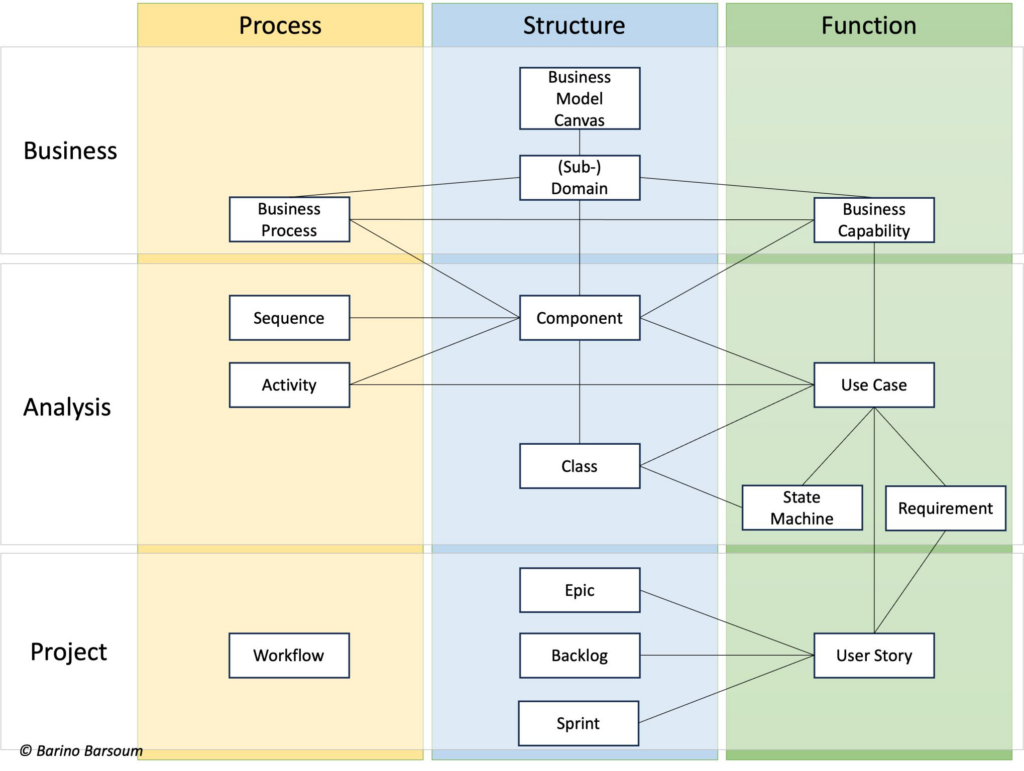How can complexity in large IT projects be managed? A model-based requirements and software engineering approach that starts with the analysis of the business model, continues through processes and requirements, and culminates in a system design, is key. Does that sound complicated? It is! It requires engineering excellence. This is the only way to master complex IT projects. Building a backlog with epics and user stories is good, but not sufficient. The solution is to create structure through domains and business capability models, the modeling of processes and use cases as anchor points for requirements, and further system models like activity diagrams, state machines, and more. Once a certain degree of modeling of the structural relationships of the system’s fundamental elements has been achieved, the use cases can be linked with user stories and managed through the development process. User stories alone, without carefully analyzing and modeling the structural relationships of the system elements, fall short. Designing complex system solutions requires more. A model-based requirements and software engineering approach makes complexity manageable, helps ensure consistency, and makes complex interrelations communicable. It provides analysts and developers with a solid foundation for agile software development. And only then can good design decisions be made in complex distributed systems.
The following diagram illustrates a meta model:

Schreibe einen Kommentar